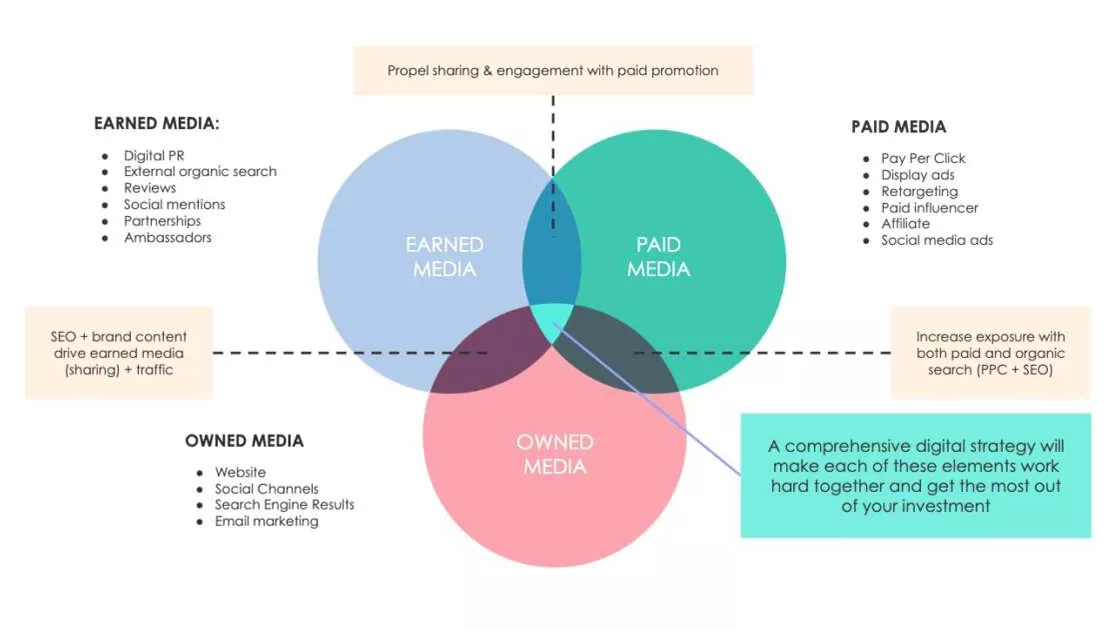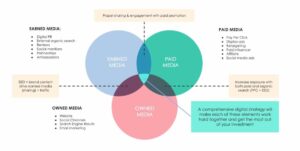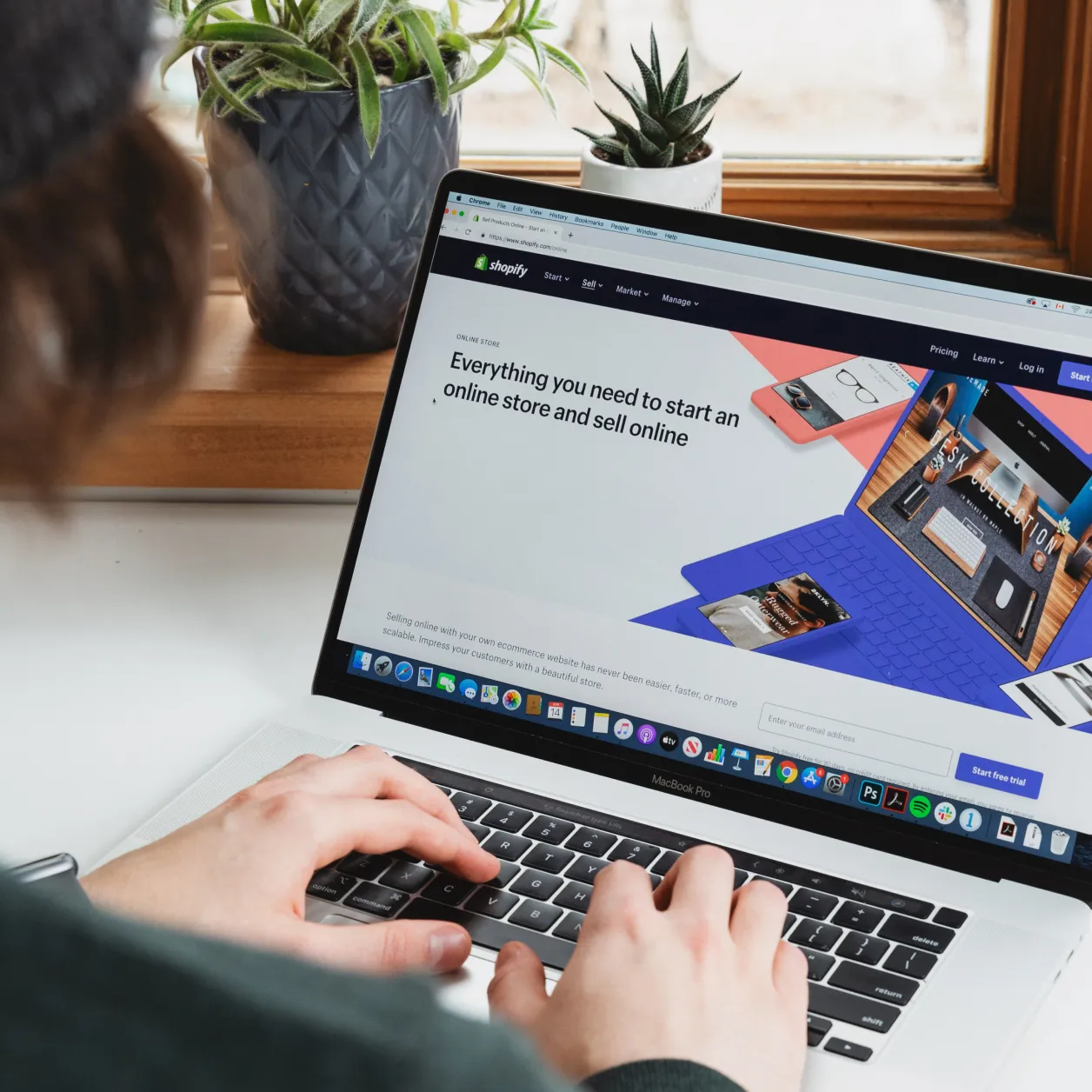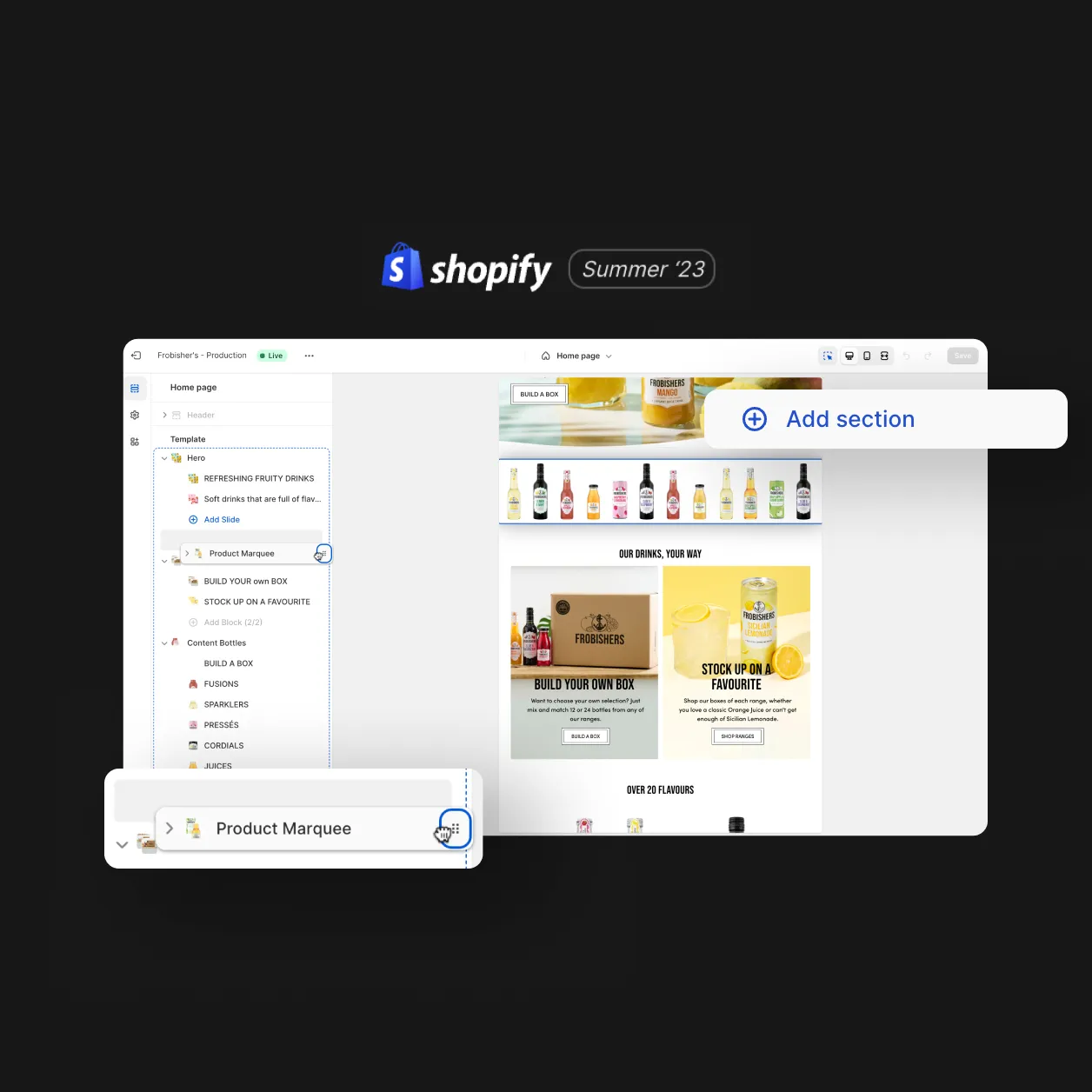
We often speak to clients who know that they need to invest in digital marketing but simply don’t know where to start or where to spend their budget. This is particularly true for brands and businesses that are still in their infancy when it comes to digital. The framework of “Owned, Earned & Paid Media” is a popular way that we help these young digital brands focus their plans and this post will explain it in more detail.
There are three key areas to consider when developing a digital marketing strategy: Earned, Owned and Paid Media.

What is earned media?
Earned media is everything that is off your website and it’s the area that you have the least direct control over. For example, reviews from customers, blog posts about your products or features, social mentions or how an ambassador refers to you on other media channels. Earned media can also be referred to as Digital PR. It’s the way your brand is perceived on third party sites.
What is owned media?
Owned Media are the platforms that you have ownership of and more control over. For example, your website, email database, search results from your website and social channels. This is the easiest area to make changes to and that have the largest direct impact on how your business is perceived.
What is paid media?
Finally, we have paid media. Paid media is generally anything that falls under the umbrella of advertising and that you spend a media budget on. For example, Facebook ads, PPC, display etc. It can be argued that you can spend money on tactics like SEO but this is categorised as “owned media” because it’s impacting your website and you haven’t paid for media costs.
Surely some of these can be both?
You’re right to think that there is overlap, as PPC is a media cost but it’s also directly impacting your website. Engineering search results through a blogger outreach programme also blurs the lines between paid and earned media. We also boost posts on social to help generate broader awareness and engagement which is part paid media, earned media and owned media.
This is why the venn diagram is very useful – the most important element is the bit in the middle, which is where the strategy comes in and leverages the opportunities across all types of digital media.
A siloed approach to simply focus on one tactic rarely works, instead we need to look at the digital landscape and then prioritise the areas that are weakest. For example, if your owned media isn’t up to scratch, there is no point in throwing lots of budget into a paid media strategy which will only paper over the cracks of a weak conversion funnel. Equally, there is no point in doing a paid media strategy if your earned media profile is in bad shape. Consumers often want to see a third party recommendation of a product or service for validation that their purchase decision is a good one.
Often brands and businesses have a little bit of each of these types of media working for them but by referencing the diagram, it’s easy to distinguish where the gaps are and what needs to be prioritised. This is an excellent starting place to reference if you have no idea where to begin with digital marketing, simply look at each area and determine if you have leveraged it to it best.
If you need any more help with a digital strategy, simply drop us an email or follow us on Instagram to ask a question.
Design
Inspiring behaviour change through visual experiences. Our digital design services ensure instant clarity and visuals that cut-through in a cluttered market.




